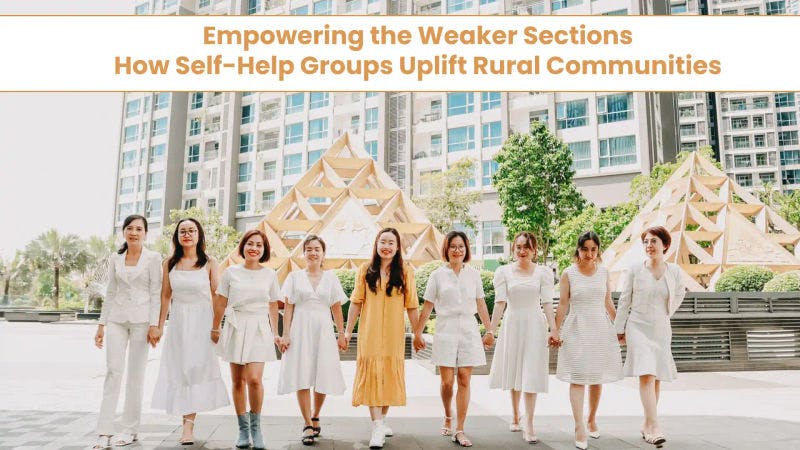How Self-Help Groups Uplift Rural Communities

Self-Help Groups (SHGs) are a beacon of hope for countless underprivileged individuals in India, particularly in rural areas. These informal associations empower people to collectively tackle challenges like poverty, illiteracy, and lack of access to credit.
What are SHGs?
SHGs are self-governed groups formed by people with similar socioeconomic backgrounds. They pool their savings, build trust, and work together to improve their living conditions. These groups typically consist of 10-25 members, often women, who face common struggles.
How SHGs Function?
Building Financial Capacity: SHGs promote a culture of saving among members. These collective savings are deposited in banks, establishing a financial history and credibility. This paves the way for accessing loans at reasonable interest rates, a significant advantage considering the high costs associated with traditional moneylenders.
Conflict Resolution and Decision Making: SHGs operate on principles of collective leadership and mutual discussion. This fosters a sense of community and empowers members to address conflicts constructively.
Microfinance and Microenterprises: SHGs provide collateral-free loans to members, enabling them to start small businesses or income-generating activities. This financial independence translates into improved livelihoods and social mobility.
The Need for SHGs
Financial Inclusion: One of the primary reasons for rural poverty is the lack of access to formal financial services. SHGs bridge this gap by facilitating microfinance and savings opportunities.
Social Capital and Women Empowerment: SHGs foster a sense of community and collective action. They empower women, a traditionally marginalized section of society, by providing them with a platform to develop leadership skills and gain financial independence.
The Genesis and Growth of SHGs in India
The SHG movement in India has a rich history. The formation of the Self-Employed Women's Association (SEWA) in 1970 marked a significant starting point. Since then, several government initiatives like the National Rural Livelihoods Mission (NRLM) have further strengthened and expanded the reach of SHGs.
Benefits of SHGs
Social Reforms: SHGs promote collective action against social evils like dowry and alcoholism.
Gender Equality: They empower women and encourage their participation in local governance.
Voice for the Marginalized: SHGs enable weaker sections to have a say in policy decisions that impact their lives.
Financial Inclusion: SHGs make access to credit easier and reduce dependence on informal lenders.
Improved Living Standards: Financial inclusion through SHGs leads to better healthcare, education, and overall well-being.
Leadership Development: Active involvement in SHGs equips members with valuable leadership skills.
Challenges and the Way Forward
Despite their success stories, SHGs face challenges like limited access to skill development resources and marketing opportunities. To ensure their long-term sustainability, focused efforts are needed in areas like:
Expanding SHGs: Bringing credit-deficient areas and urban populations under the SHG umbrella.
Capacity Building: Providing training and skill development programs to enhance income-generating capacities.
Financial Innovation: Designing new financial products tailored to the specific needs of SHGs.
Effective Monitoring: Establishing robust monitoring systems to track progress and identify areas for improvement.
Conclusion
Self-Help Groups are a powerful tool for empowering underprivileged communities and fostering inclusive economic growth. By addressing the existing challenges and promoting continuous innovation, SHGs can continue to be a driving force in transforming rural India.


